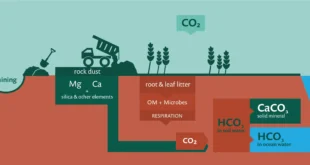- In his Independence Day address, Prime Minister Narendra Modi exhorted the country to pursue aatmanirbharta in energy by focusing on clean energy technologies.
- Concerns over the pricing and availability of oil and gas in the wake of the Ukraine crisis continue to fuel global policy debates on energy security.
- However, the fragility of clean energy supply chains obscures pathways for countries to reduce dependence on fossil fuels.
- Imported inflationary pressures through exposure to volatile oil and gas markets also pose risks to macroeconomic growth and stability, particularly for India, import-dependent for around 85% of its oil and half of its gas needs.
- Therefore, securing access to key minerals such as lithium, cobalt, nickel and rare earth metals is critical for building resilient and indigenous supply chains for clean energy technologies.
Challenges
This is challenging on several counts.
- First, reserves are often concentrated in regions that are geopolitically sensitive or fare poorly from an ease of doing business perspective.
- Second, a portion of existing production is controlled by geostrategic competitors. For example, China wields considerable influence in cobalt mining in the Democratic Republic of Congo through direct equity investments and its Belt and Road Initiative.
- Third, future mine production is often tied up in offtake agreements, in advance, by buyers from other countries to cater to upcoming demand.
As a first step towards the sourcing of strategic minerals, the Indian government established KhanijBidesh India Limited (KABIL) in 2019 with the mandate to secure mineral supply for the domestic market.
Suggestions
Based on a CEEW study, here are suggestions that policymakers could consider to further this objective.
- First, figure out the mineral requirements of the domestic industry. This could best be accomplished by a task force which includes the ministries of power, new and renewable energy, heavy industry, and science and technology.
- Creating five-year road maps with clear targets for deployment and indigenous manufacturing across clean energy applications would provide visibility to domestic investors.
- Further, assess the technology mix that would support this deployment. On this basis, determine the quantities of minerals necessary to support indigenous manufacturing.
- Second, coordinate with the domestic industry to determine where strategic interventions by the government would be necessary for the purpose.
- KABIL could collaborate with industry to bolster its market intelligence capabilities for tracking global supply-side developments.
- Developing a granular picture of available and committed production capacities and economy-wide and sector-specific policy developments is the first step to develop an informed perspective on mineral supply.
- If there is adequate visibility on sourcing opportunities in conducive geographies, the private sector should be encouraged to secure minerals for its own requirements.
- Third, if conducive investments opportunities don’t exist, KABIL should pre-emptively sign offtake agreements with global mineral suppliers to secure future production.
- It could aggregate a reliable supply of minerals for domestic requirements and sign back-to-back sales agreements with the domestic industry.
- Such large-scale centralised national procurement could be done at preferential terms.
- Fourth, the government should jointly invest in mining assets with geostrategic partners. KABIL should make equity investments in mining jurisdictions that private sector investors may deem too risky.
- It should leverage government-to-government partnerships to mitigate investment risks.
- This could be done through joint investments with sovereign entities from geostrategic partners or private sector entities with expertise in specific geographies.
- The External Affairs Ministry could initiate conversations with partner countries. Establishing resilient clean energy supply chains is a priority for the Quad, for instance.
- Fifth, support technologies that utilise domestically available materials. The deployment of technologies such as sodium-ion batteries could reduce requirements for sourcing minerals from beyond India’s borders. While the current performance-linked incentive scheme on batteries is technologically agnostic, India could consider creating a tranche of capital to incentivise investments in technologies that rely on local raw materials. It could also propose co-development of such technologies with geostrategic partners.
- Lastly, develop policies on urban mining aimed at recycling mineral inputs from deployments that have completed their useful life.
- These could help further reduce dependence on international sourcing. Besides Ukraine, other potential geopolitical flashpoints also exist against a backdrop of dwindling multilateral cooperation.
- India must act immediately and decisively to mitigate these risks to its energy security.
SOURCE: THE HINDU, THE ECONOMIC TIMES, PIB
 Chinmaya IAS Academy – Current Affairs Chinmaya IAS Academy – Current Affairs
Chinmaya IAS Academy – Current Affairs Chinmaya IAS Academy – Current Affairs



